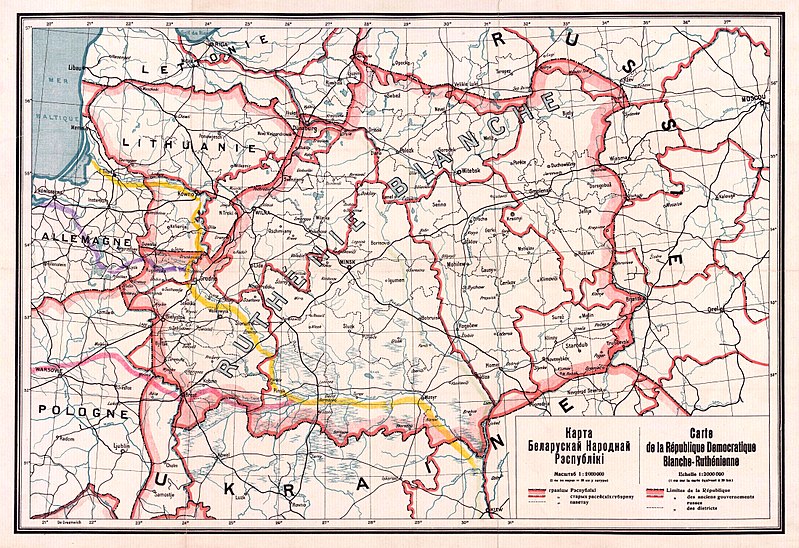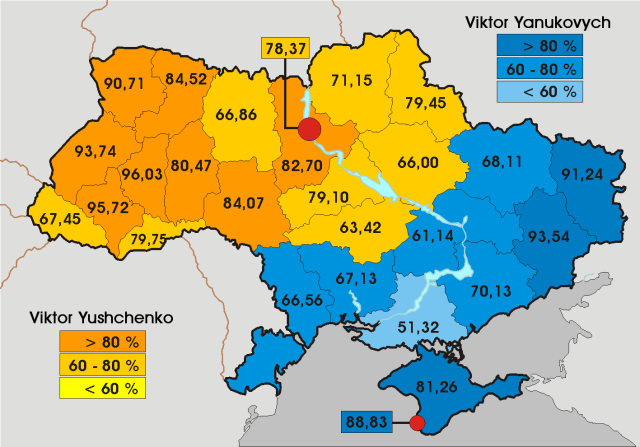the proposed Polish-Lithuanian-
Ruthenium Commonwealth
to elevate the Cossacks and
Ruthenians to the position equal to that of Poland and Lithuania as a "Commonwealth of Three Nations"
this idea was OPPOSED by the Roman Catholic Church,
with the Jesuit Counter Reformation selling out Poland for its geopolitical objectives
http://en.wikipedia.org/wiki/Polish%E2%80%93Lithuanian%E2%80%93Ruthenian_Commonwealth
Polish–Lithuanian–Ruthenian Commonwealth (
Polish:
Rzeczpospolita Trojga Narodów,
Commonwealth of Three Nations) was a proposed (but never actually
created) European state in the 17th century that would replace
contemporal
Polish–Lithuanian Commonwealth.
The creation of a
Duchy of Ruthenia was considered at various times, particularly during the 1648
Cossack insurrection against
Polish rule in
Ukraine (see
Khmelnytsky Uprising). Such a
Ruthenian duchy, as proposed in the 1658
Treaty of Hadiach, would have been a full-fledged member of the
Polish–Lithuanian Commonwealth,
which would thereby have become a tripartite
Polish–Lithuanian–Ruthenian Commonwealth. In May 1659, the Polish Diet
(Sejm) ratified the treaty with an emended text.
[1]
The idea of a Ruthenian Duchy within the Commonwealth was completely abandoned.
[2] Canadian historian Paul Robert Magosci believes that it happened due to divisions among the
Cossacks and
Muscovite invasion[3]
which, however, both occurred much earlier than the Treaty of Hadiach
was signed. Russian historian Tairova-Yakovleva considers the resistance
of the Polish society
and the papal pressure as the reasons for the
incomplete ratification.
The idea of Polish–Lithuanian–Ruthenian Commonwealth returned during the
January Uprising, when in 1861, a patriotic demonstration took place at
Horodło. The so-called Second
Union of Horodło was announced there, by the
szlachta of
Congress Poland, former
Grand Duchy of Lithuania,
Volhynia and
Podolia. New Poland, based on the Second Union of Horodlo was to be based on the three nations, and its proposed
coat of arms consisted of
Polish eagle, Lithuanian
Pahonia, and patron saint of Ruthenia,
Archangel Michael.
Towards this end was the Treaty of Hadiach
http://en.wikipedia.org/wiki/Duchy_of_Ruthenia
The
Treaty of Hadiach (
Polish:
ugoda hadziacka;
Ukrainian:
гадяцький договір) was a
treaty signed on 16 September 1658 in
Hadiach (Hadziacz, Hadiacz, Гадяч) between representatives of the
Polish–Lithuanian Commonwealth (represented by S. Bieniewski and K. Jewłaszewski) and
Cossacks (represented by
Hetman Ivan Vyhovsky and
starshina (
sztarszna, the elders)
Yuri Nemyrych, architect of the treaty, and
Pavlo Teteria). It was designed to elevate the Cossacks and
Ruthenians to the position equal to that of Poland and Lithuania in the
Polish–Lithuanian union and in fact transforming the Polish–Lithuanian Commonwealth into a
Polish–Lithuanian–Ruthenian Commonwealth (
Rzeczpospolita Trojga Narodów, "Commonwealth of Three Nations").
The specific features of the Treaty of Hadiach were:
- creation of the Duchy of Ruthenia (Polish: Księstwo Ruskie) from Chernigov Voivodeship, Kiev Voivodeship and Bratslav Voivodeship (The Cossack negotiators had originally demanded that Ruthenian Voivodeship, Volhynian Voivodship, Belz Voivodeship, and Podolian Voivodeship be included as well), which would be governed by a Cossack hetman, elected for life from among four candidates presented by the Cossacks and confirmed by the King of Poland;
- creation of parallel Ruthenian offices, tribunal, academy (Kiev's
Orthodox Collegium would be raised to the status of an academy; a second
Orthodox higher institution of learning would be founded; and as many
schools and printing presses "as were necessary" would be established), a
judicial system, treasury and mint as existed in Poland and Lithuania
(see Offices in the Polish–Lithuanian Commonwealth);
- the Duchy would be connected with the Commonwealth by the common king. There would be only one national parliament (Sejm) and one foreign policy in the Polish–Lithuanian–Ruthenian Commonwealth;
- admission to the Senate of Orthodox ecclesiastic members: the Archbishop (metropolitan) of Kiev and other Orthodox bishops
(of Lutsk, Lviv, Przemyśl, Chełm and Mstislav) and elevation of the
Orthodox religion and Church to the same level as Catholicism. No Uniate
monasteries or churches were to be built in the Duchy - the Union of Brest would be dissolved on the territory of the Ruthenian Duchy;
- ennoblement of Cossack elders (starshyna kozatska).
Each year the hetman would recommend to the king 1,000 Cossacks to
receive a patent of hereditary nobility, and up to 100 Cossacks in each
military regiment could be personally ennobled as well.
- establishment of a Cossack army, in the form of the Cossack register
of 30,000. The officers of these forces would be elected by their own
members. The Cossacks' own forces would be supplemented by 10,000
regular mercenaries, paid from public taxes. No other Commonwealth
troops were to be allowed in Rus' without the consent of the Cossack
hetman, except in the event of war, and then they would come under the
Cossack hetman's command;
- return of land and property to Commonwealth nobility (szlachta), which had been confiscated by Cossacks after the 1648 Khmelnytsky Uprising;
- a general amnesty for previous crimes would be decreed.
History and Importance
Historian
Andrew Wilson has called this "one of the great 'What-ifs?' of Ukrainian and East European history", noting that
"If
it had been successfully implemented, the Commonwealth would finally
have become a loose confederation of Poles, Lithuanians and Ruthenians.
The missing Ukrainian buffer state would have come into being as the
Commonwealth's eastern pillar. Russian expansion might have been checked
and Poland spared the agonies of the Partitions or, perhaps just as
likely, it might have struggled on longer as the 'Sick man of Europe'" (p. 65).
In spite of considerable Roman Catholic Clergy opposition, the Treaty of Hadiach was approved by Polish king and parliament (
Sejm) on 22 May 1659, but with an emended text.
[1] The idea of a Ruthenian Duchy within the Commonwealth was completely abandoned.
[2]
It was a Commonwealth attempt to regain influence over the Ukrainian
territories, lost after the series of Cossack uprisings (like the
Khmelnytsky Uprising) and growing influence of Muscovy over the Cossacks (like the 1654
Treaty of Pereyaslav).
Hetman Vyhovsky supported the negotiations with the Commonwealth,
especially after he suppressed a revolt led by the colonel of Poltava,
Martyn Pushkar, and severed relations with
Tsardom of Russia for its violations of the
Treaty of Pereyaslav of 1654.
[3]
The Treaty of Hadiach was, however, viewed by many Cossacks as 'too
little, too late', and they especially opposed the agreement to return
land property to the szlachta. After the 1648 revolt, the Commonwealth
was very unpopular with ordinary Cossacks. Rank-and-file Cossacks saw
Orthodox Moscow as their natural ally and did not care for alliance with
the Commonwealth. Furthermore, Hadiach was too much a deal that merely
benefited the elite of the Cossacks—the "starshyna"—who wanted to be
recognized as equal to the Polish nobility. Thus, while some Cossacks,
among them the hetman
Ivan Vyhovsky supported the Commonwealth, many did not, and Cossack unrest continued in Ukraine.
[4][not in citation given]
The Commonwealth position was further weakened by a string of losses in the
Russo-Polish War (1654–67).
The Tsar felt threatened by the Treaty of Hadiach, which weakened his
hold on Cossacks. The Russians saw the treaty as an act of war, and even
before it was ratified sent an army into Ukraine. Although Polish
forces under
hetman Stefan Czarniecki dealt defeat to Russian forces at the
battle of Polonka, and recaptured
Wilno
in 1660, lack of other Commonwealth military successes, especially in
Ukraine, further undermined Cossack support of the Commonwealth.
Vyhovsky's early success at the
battle of Konotop
in June 1659 was not decisive enough, and was followed by a series of
defeats. The Russian garrisons in Ukraine continued to hold out; a
Zaporozhian attack on the
Crimea forced
Vyhovsky's Tatar allies to return home, and unrest broke out in the
Poltava region. Finally, several pro-Russian colonels rebelled and accused Vyhovsky of "selling Ukraine out to the Poles."
Unable to continue the war, Vyhovsky resigned in October 1659 and
retired to Poland. The situation was further complicated by the
Ottoman Empire,
which tried to gain control of the disputed region and played all
factions against each other. Meanwhile, the Commonwealth was weakened by
the
rokosz of Jerzy Lubomirski.
In the end, Russia was victorious, as seen in the 1667
Treaty of Andrusovo and the 1686
Eternal Peace. Cossacks fell under the Russian sphere of influence, with much fewer privileges under the
Hetmanate
than would have been granted under the treaty of Hadiach. By the end of
the 18th century, Cossack political influence has been almost
completely destroyed by the
Russian Empire.



























